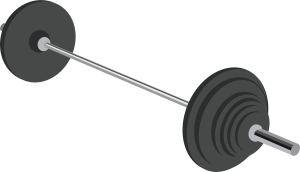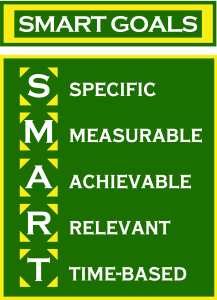Regardless of the sport, athletes must work tirelessly to maintain and improve their athletic performance. For most sports, this work starts well before their official season begins. Offseason conditioning is a key component for a successful season, as it allows athletes to get back into their training plan before the pressure of competition sets in. Working diligently outside of scheduled practice times gives athletes the ability to build up strength and boost other skills needed to excel in their chosen sport.
Junior Priya Ghose has been a varsity softball player for three years and is no stranger to offseason conditioning. During the winter, she goes to conditioning with her teammates to prepare for the upcoming spring softball season.
“You can work on new skills that you need to master for the season,” Ghose said. “When it comes time for season, you’re not caught off guard.”
Activities that athletes often do to condition themselves during the offseason include heavy lifting and other forms of cross-training. Many athletes use the offseason to lift heavier weights than they would during the season, building up more muscle before the competition begins. Depending on the sport, there are different types of drills and other exercises that target specific parts of the body that work to improve the techniques used in their sport.

“I usually hit off of the tee,” Ghose said. “That’s softball specific, but also running and lifting weights, going to the gym, cardio, and eating well.”
An important aspect of offseason training is injury prevention. Countless athletes have their seasons prematurely ended due to physical injuries, such as concussions or muscle tears, so preventing those injuries is often an important focus for many sports teams. Strengthening different muscles and joints is a crucial step toward preventing injuries, in addition to maintaining a balanced diet and staying hydrated. Athletes also tend to overwork themselves, potentially causing their level of performance to decrease due to physical exhaustion. Getting enough rest is a crucial component of athletic performance.
Senior track runner Claudia Johnson is a great example of an athlete who continues to train during the offseason. She often goes to the track to run sprints on days she isn’t lifting weights.

“To stay fit during my offseason, I just try to go to the track at least once or twice a week, so that I remember what it feels like to run,” Johnson said. “I make sure that I also can get into the gym a few times a week because one of the worst things during my track season is that I get strength imbalances and then I end up injured.”
Staying motivated is a common struggle among athletes of all sports, but it gets especially difficult to stay consistent during the offseason when the extra work is truly optional. This all goes into the mental health aspect of sports as well. To perform physically, an athlete must be in a good enough space mentally. Mentally preparing for the upcoming season, including visualizing success and planning out time to prepare physically, can boost an athlete’s ability to perform their best when the time comes. Setting and adhering to goals is a crucial part of offseason training for many athletes. Choosing goals that are specific and will progress in a way that is easy to track and monitor will increase the chances of attaining those goals.
 As some athletes may already know, setting Specific, Measurable, Attainable, Relevant, and Time-bound goals is a great way to keep track of improvement. SMART goals have been proven to be one of the most effective goal setting techniques for everyone, but especially athletes. If a goal meets all of the listed criteria, then it is more likely to be accomplished. The goal must be specific and measurable enough to track progress. If the goal is not attainable, then the goal must be altered or edited to make it realistically possible to accomplish. The goal is also more likely to be accomplished if it is relevant to other broader goals in one’s life, due to the increased motivation that comes from related goals. Finally, the goal must fit realistically in a time frame of the athlete’s choosing, holding the athlete accountable for tracking their progress and making them more likely to achieve that goal. This technique has been utilized for decades, especially by countless athletes working to prepare themselves for their season.
As some athletes may already know, setting Specific, Measurable, Attainable, Relevant, and Time-bound goals is a great way to keep track of improvement. SMART goals have been proven to be one of the most effective goal setting techniques for everyone, but especially athletes. If a goal meets all of the listed criteria, then it is more likely to be accomplished. The goal must be specific and measurable enough to track progress. If the goal is not attainable, then the goal must be altered or edited to make it realistically possible to accomplish. The goal is also more likely to be accomplished if it is relevant to other broader goals in one’s life, due to the increased motivation that comes from related goals. Finally, the goal must fit realistically in a time frame of the athlete’s choosing, holding the athlete accountable for tracking their progress and making them more likely to achieve that goal. This technique has been utilized for decades, especially by countless athletes working to prepare themselves for their season.
Training during the offseason is often a good testament to the level of determination and dedication that athletes have.
“Just like anything else, if you want something like conditioning to be beneficial you must put in the time and be dedicated to the process,” DHS girls swim coach Jonathan Meier said.
Often what sets outstanding athletes apart from the rest is their work ethic. Whether it’s waking up to go to the gym before school or staying late at practice for extra drills, putting in the hard work pays off.
“There’s always going to be someone who’s going to be outworking you,” Ghose said. “If you only wait to work on stuff in season, you’re already behind.”
Working through the offseason is a key tool to athletic success, similar to completing homework being a key component of academic success. Putting in the time and effort outside of the season is a strategy that athletes from various sporting backgrounds utilize to improve themselves as an athlete.

